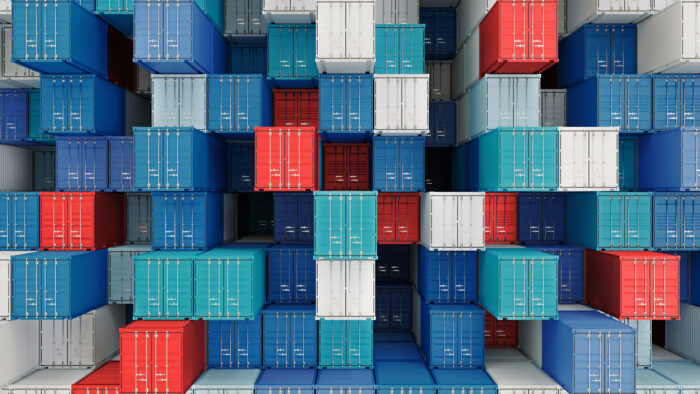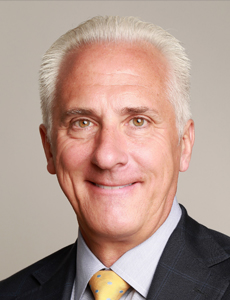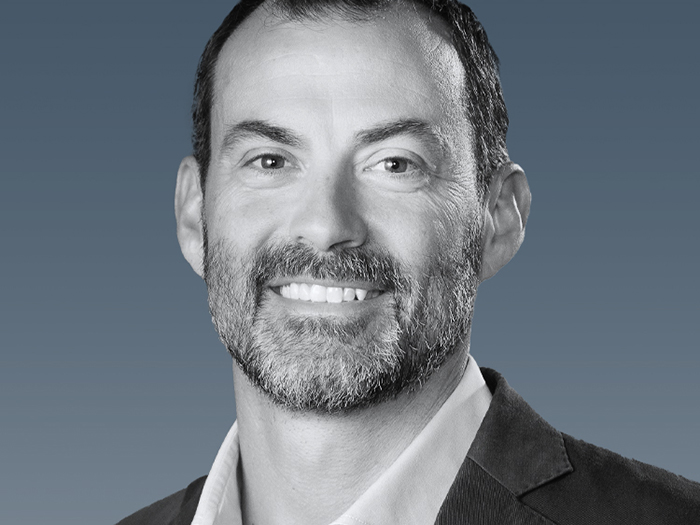As Cargo Sensors Improve, a Flood of Shipping Data Will Follow. But Then What Will We Do with It?

The causes of cargo loss during shipping are many, from supply chain delays to damage from improper handling to outright theft. But as the use of sensors in cargo becomes more widespread and the available data on loss becomes more abundant, experts are optimistic that our ability to address these challenges will improve.
“With each year, we get closer to robust data sets to inform pricing, aggregation and allocation,” said Drew Feldman, senior vice president and marine business unit leader for CNA. “In marine in particular, it has been difficult to get clarity on aggregation aboard a vessel or in a port.”
He is most excited about shippers themselves using technology to track cargoes and reduce their own risk. “The more information a shipper can gather for itself, and then provide to an underwriter, the better that underwriter can determine appropriate pricing, allocation, terms and conditions,” said Feldman. To that end, CNA formed a partnership in 2021 with Overhaul, a supply chain risk management firm.
“Shipping is a very large, very diverse global industry,” Feldman noted. “It runs from the highest technology to low tech to no tech. For example, the primary cause of shipboard fire is misdeclaration of cargo. I hope that technology will make it more difficult for dangerous cargoes to be loaded and stowed” without proper documentation and precautions.
For the most part, the shipper has responsibility for “stow and load” — putting the cargo into the shipping container and arranging to have the box put on the truck, train or vessel. Other than what is listed and described in the bill of lading, the carrier usually does not know about the contents.
A Bit of the Wild West

Darin N. Miller, national marine manager and senior surveyor, Sedgwick
“There is no mass aggregation of sensor data from the cargo,” said Darin N. Miller, national marine manager and senior surveyor at Sedgwick. “It’s not until a problem is discovered that the shipper calls the insurance company, and the insurance company calls us. I try to give my clients as much information [as possible] to help determine when and thus where the loss occurred. But I can only request data from the shipper.”
This is a very exciting area, said Richard Soja, global head of inland marine at Allianz. “It’s a bit of the Wild West, with everyone doing their own thing, with no consistency yet. The data aggregation services play a role, but for privacy, the data gets scrubbed over and over, and that eventually dilutes its usefulness.”
For example, insurers know about hot spots or specific routes that have higher loss histories. That information can be the starting point for conversations with insureds about their loss-control practices.
Specialization and customization are growing trends in sensor technology and data aggregation, Soja noted. “We have one client that has developed their own proprietary sensors and software,” he said. “The artificial intelligence trains itself to modify the parameters if necessary. If there are damages but the sensors recorded everything — [and] temperature, tilt and impact are all within tolerance — then there have to be tweaks to the parameters.”
That said, “we are a along way from centralizing that level of sophistication,” Soja added. “We can’t yet do that today. We would love to have sensor data rolling up to central processing. That would enable underwriters to decide if they want the risk or not, and if so, at what price and under what terms and conditions.” It can already be done in some places under some circumstances, but it’s far from standard or ubiquitous.
The Burden of Effort

Richard Soja, global head of inland marine, Allianz
Effort and expense, of course, are factors. “Even if sensors are cheap, there are costs to install and maintain them, to collect and interpret data,” Soja said. He added that algorithms for interpreting data are a significant differentiator and will continue to grow in importance. That includes the ability to aggregate and interpret both proprietary and public data.
Ronnie Adcock, senior vice president at Sedgwick, explained that data, whether from individual sensors or aggregated, is complementary to the work of human surveyors. He related that a client shipping high-value, temperature-sensitive materials was experiencing multiple claims. Sensor data showed temperature spikes after the goods arrived at a major airport, but it was an on-site surveyor who determined that the airfreight containers were being left on the tarmac too long, exposing them to the weather.
“We are a claims management service,” Adcock noted with a laugh, “and getting that problem solved meant fewer claims for that client. So technically we lost business, but we certainly gained loyalty from that customer.”
If theft is reported to us as soon as it is detected, said Miller, “we have the best chance of recovering the goods. But sometimes we don’t get the report for days, even a week. At that point, the chance of recovery is all but zero.”
Handling the Logistics

Ronnie Adcock, senior vice president, Sedgwick
All losses, damage and theft, are expected to increase as economies recover from the pandemic and logistics difficulties are addressed.
“The supply chain is being ironed out,” said Adcock. “The major challenge is becoming the labor shortage. That is a factor in all aspects of commerce. There is a shortage of drivers, of stevedores, of forklift drivers and warehouse staff. There is also a shortage of people in insurance. That has created an opportunity for us in the staffing business, so we are eager to hire.”
For certain routes and locations, underwriters may require unattended-vehicle warranties or armed escorts for high-value shipments. Holiday weekends are notorious because both opportunistic pilferers and organized theft rings know that goods will be sitting there for a few days. And while there may be security, there will be significantly less activity, the normal coming and going.
“If we have clients who recognize that there are risks to their goods, then we can work with them,” said Kevin Wolfe, president and chief executive of Marcato Marine Insurance Services. “We can find better practices. We are seeing more of the supply chain, and welcome insureds and their partners who are active in supply chain management and loss control. And then there are the shippers that consider claims to be a cost of doing business. They simply end up trading premium dollars for claim dollars. But that does not solve any problems. Their premiums and their retentions are just going to go up.”
There are no quick fixes, Wolfe stressed. Underwriters cannot directly address security at facilities or route selection by transportation companies. “We are eager to collaborate up and down the supply chain,” he said. “That includes vendors and service providers. It’s the clients — the shippers — who have the most influence because they are the ones that pay for the services. We would not flat-out say a client cannot ship through a certain port or via a particular route or method. We would address the risks through terms and conditions, warranties and premium.”
Striking an optimistic note, Wolfe stated, “There are ways to fix things. And we have the same goals as our clients: to help them operate safely and profitably.” &










